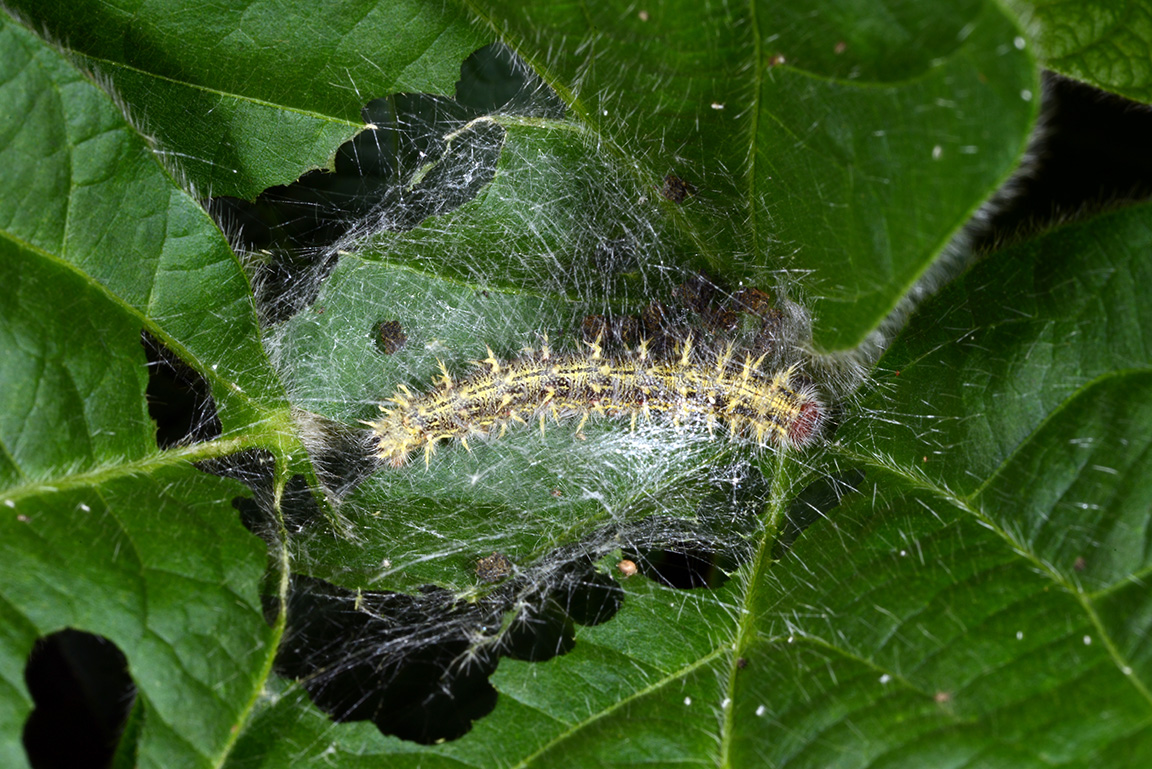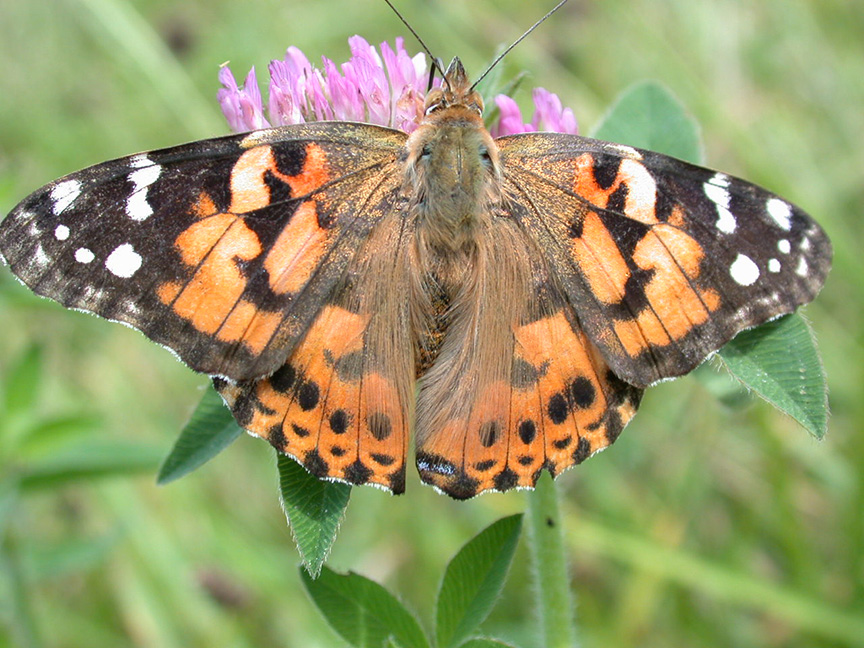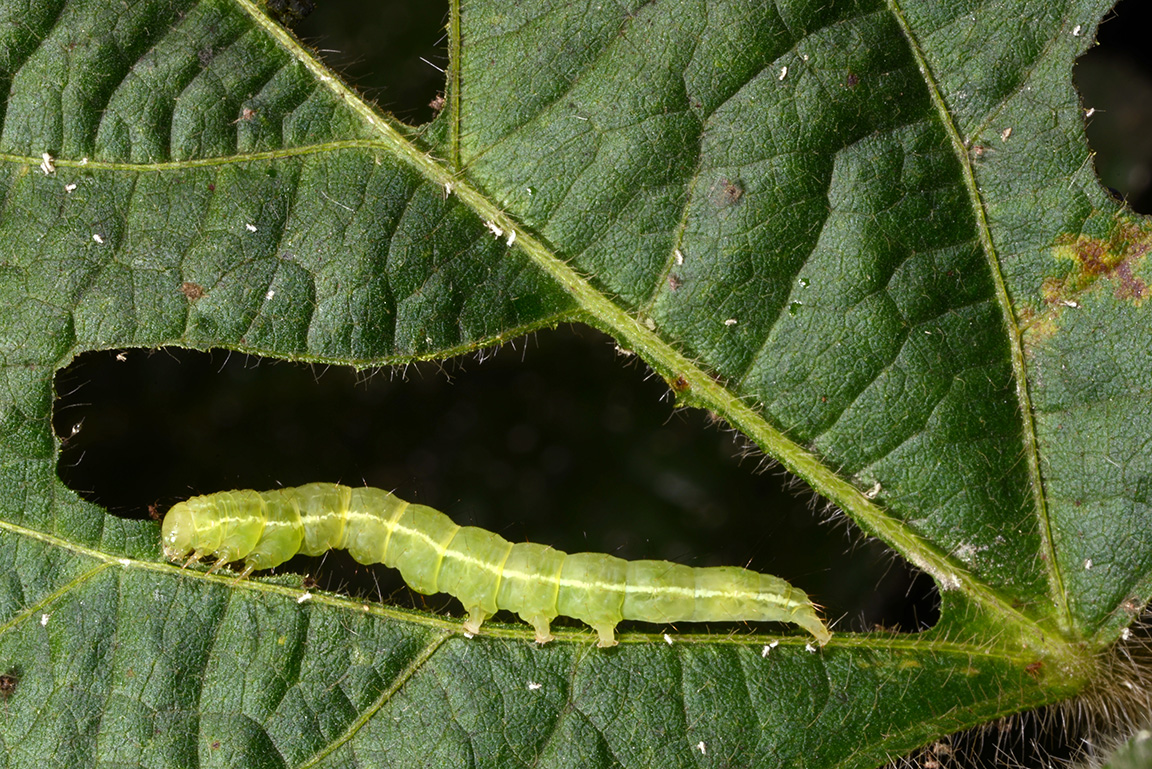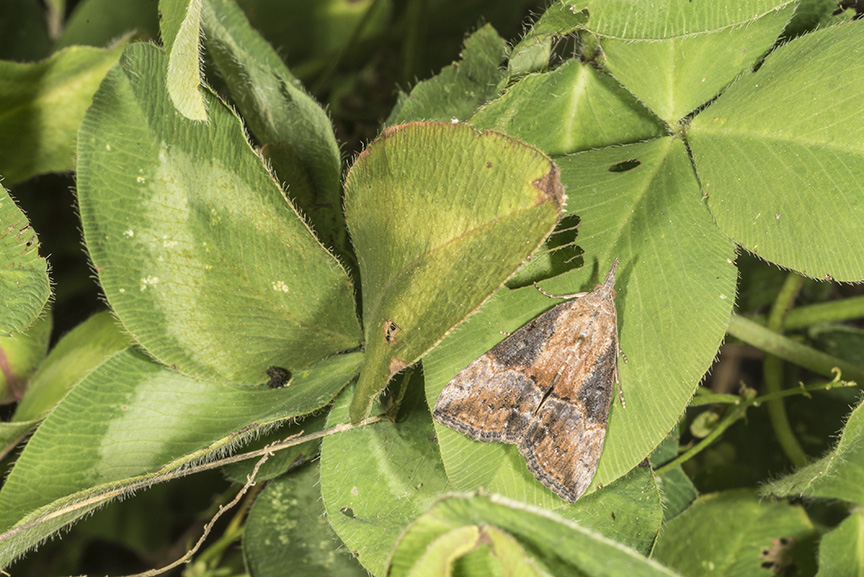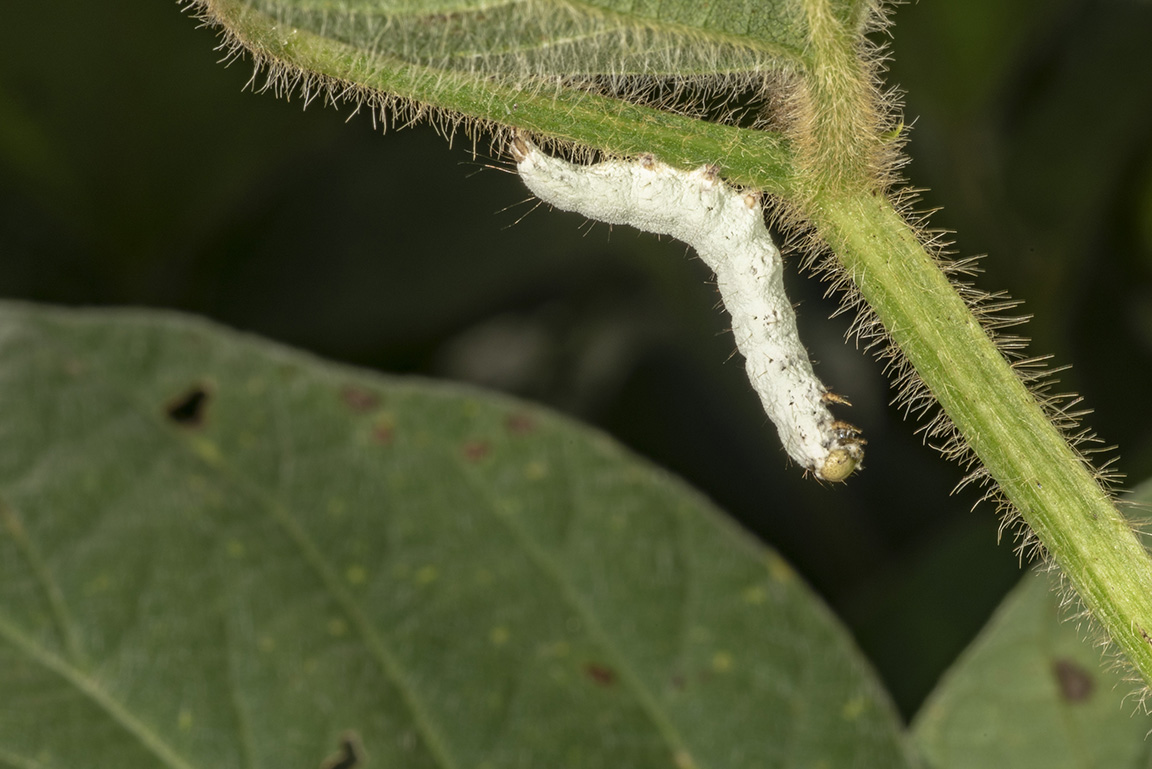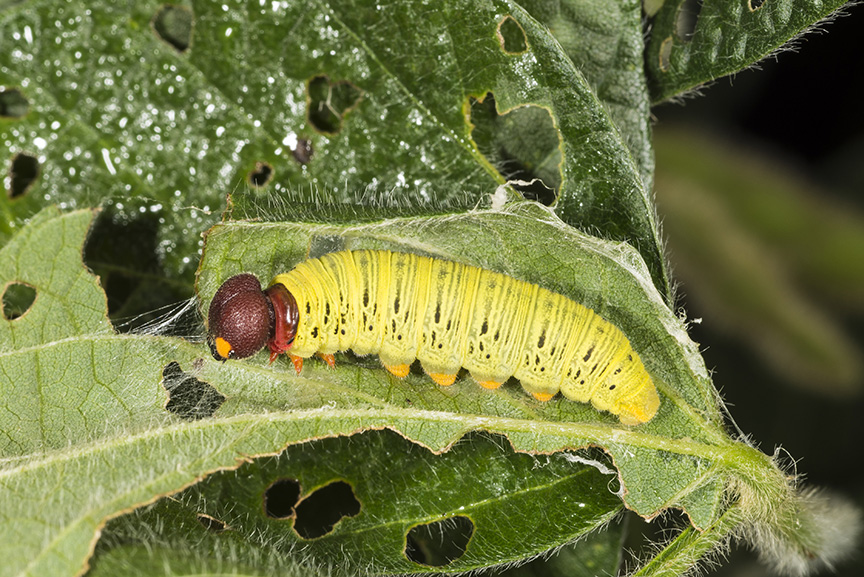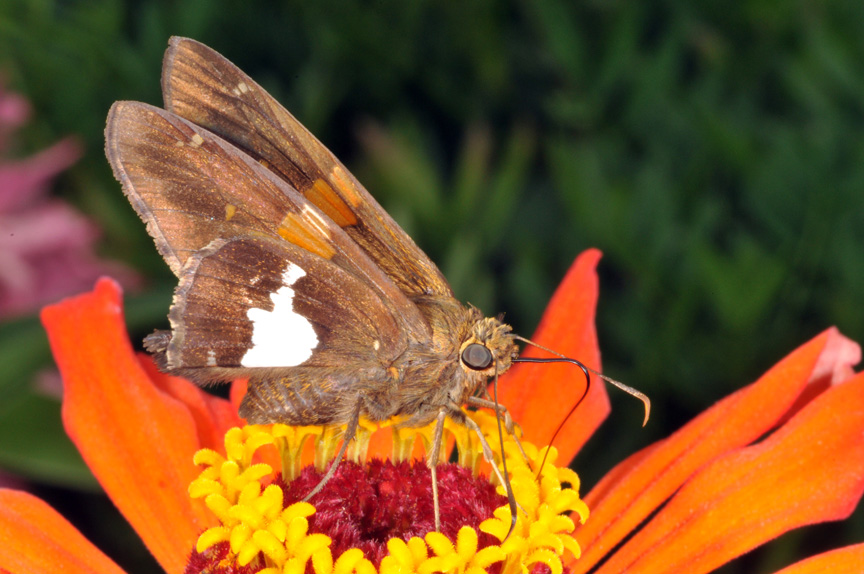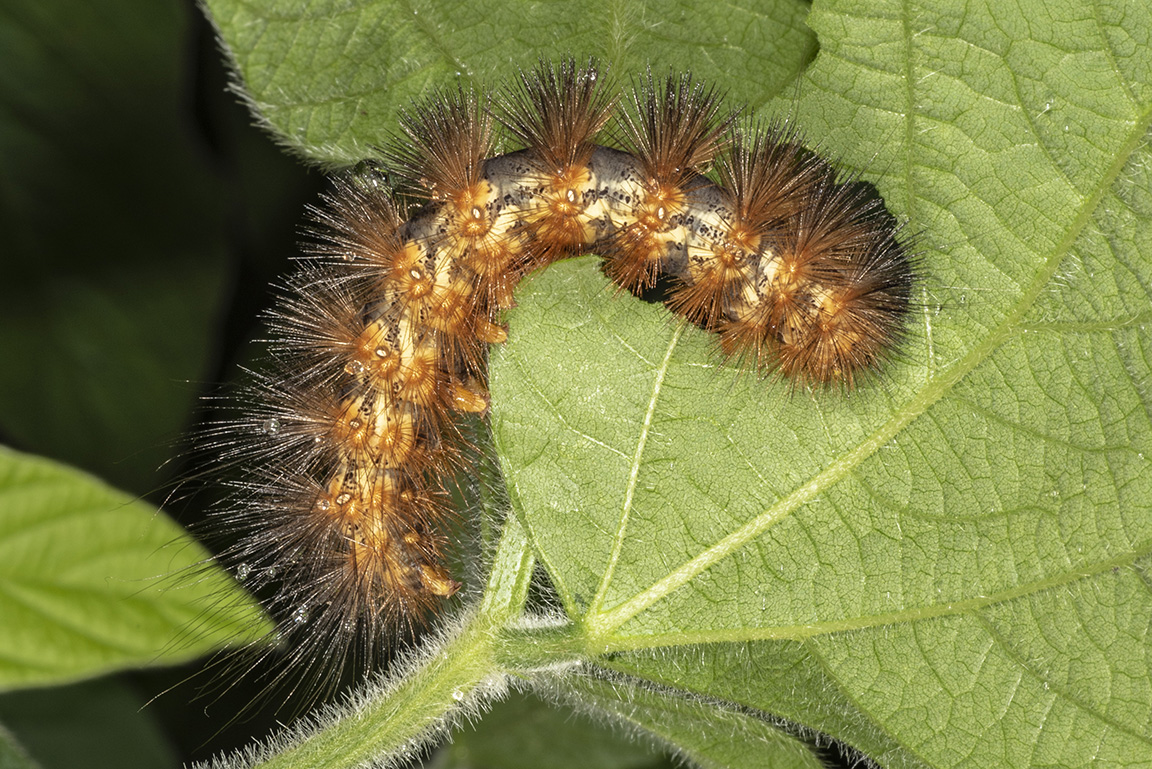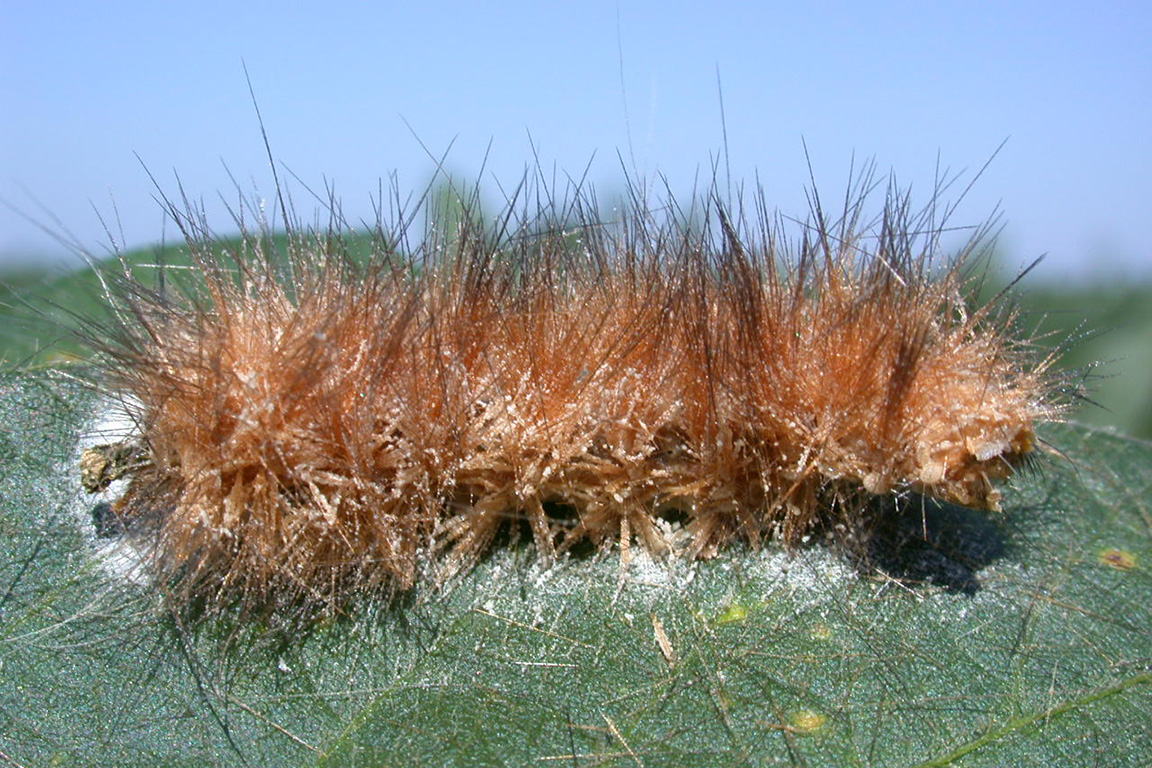The painted lady butterfly, Vanessa cardui, is mostly orange mottled with black and white markings. This is a migratory species flying from and to Mexico and the Southwestern United States in the spring and fall. Adults arrive in Indiana in the spring and lay their eggs on several species of plants. Although they feed on many weed species, their preferred host is Canada thistle. Several generations occur in Indiana before they begin their migration southwestward in the fall. The larvae, known as thistle caterpillars, are generally dark in color, with conspicuous yellowish markings on their bodies. The larvae are covered with many branching spines. Larvae reach a length of about 1-1/4 inches. The larvae feed within webbed enclosures on the upper leaves and may defoliate entire patches of weeds and feed in a similar manner on soybean. For reasons unknown, this species has been higher in numbers throughout the Corn Belt this season, some reported near treatment threshold levels. Fortunately, they are usually clumped in distribution and not threatening whole fields.
Green cloverworm is a sporadic foliage-feeding pest of soybean and is potentially destructive through September, especially this year with so many late-maturing fields. The larva has a narrow white stripe on each side of its body and four pairs of prolegs. Early larval instars skeletonize the underside of soybean leaves, leaving the upper leaf surfaces intact. More mature larvae consume all leaf tissue, leaving only the major veins and giving the plants a ragged, hail-damaged appearance. Green cloverworm larval populations usually do not reach damaging levels due to their susceptibility to attack by parasites and pathogens. High larval populations now may result in large numbers of moths flying in a couple weeks. These black moths are attracted to lights at night and can become quite a nuisance around homes and buildings.
The creepy looking caterpillar award goes to the silver-spotted skipper, Epargyreus clarus. These larvae are up to 2 inches in length, have brownish-red heads with two orange spots and a yellowish-green body. Larvae can often be found in leaves that have been rolled together and held by the caterpillars’ silken threads. Feeding damage is generally localized to a few surrounding plants. Adult skippers, which are commonly seen feeding on flowers late in the summer, have an obvious silver-white splotch on each wing.
Why does the woollybear caterpillar cross the road? The white, yellow or brown “woolly” or furry worms range in length from 1/4 to 2 inches. Mature larvae leave the plant, seek a protective place, and pupate inside a thin silken cocoon which is covered with the hairs from their bodies. There are two generations per year, with only the second or mid season larval population posing a potential threat to soybean…which occasionally happens. Usually, when populations increase they succumb to epizootics, meaning they become diseased. The adults, known as tiger moths, can commonly be seen in the spring and mid summer at night near bright lights. These moths, with a 1-1/2 to 2-inch wing span, have snow-white, yellowish, or white and black-spotted wings with abdomens that are white to yellow.
Defoliation treatment thresholds are greater than 15% during pod fill (R4-R5) and greater than 25% once seed is full size (R6).


